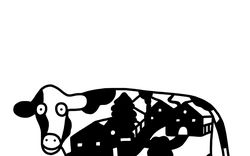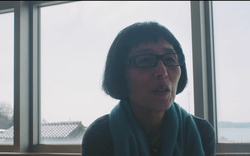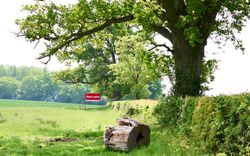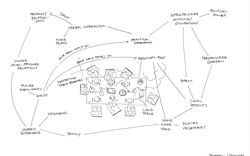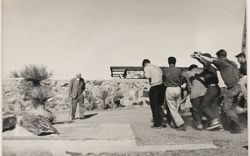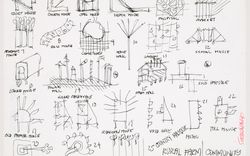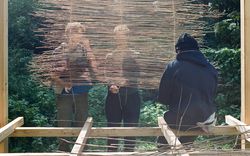Solidarity Economies
Ian Scoones on populism and rural politics, interviewed by David Huber
Nearly everyone—on the Right and the Left, poor villagers and urban elites—agrees that rural areas have been left behind. Left behind, though, by what? By whom? A few years ago, a group of academics and activists based in different parts of the world started reflecting on the changing political environment globally, particularly the rise of populism in different forms and how it is having an impact on their work in rural settings. Their article “Emancipatory Rural Politics: Confronting Authoritarian Populism,” published in The Journal of Peasant Studies in 2017, proposed a persuasive agenda for research, debate, and action. Recently, David Huber spoke with one of its co-authors, Ian Scoones, a professor in the Institute of Development Studies at the University of Sussex and a coordinator of the Emancipatory Rural Politics Initiative.
- DH
- You’ve described populism as a capacious and contradictory category. To what extent can we talk about the rural in a coherent way?
- IS
- One of the themes that’s come out of these discussions is the consequences of neoliberal policies. These policies have concentrated power and wealth in certain places, very often leaving rural areas and rural people behind. This has been associated also with large-scale, corporate investments—particularly following the food and financial crisis of the late 2000s—into rural areas that are effectively extractivist in nature. This has resulted in extensive forms of dispossession of rural people from their lands and livelihoods that they once relied on.
So we see these dual processes of being left behind from the processes of globalization and neoliberal economies and, at the same time, extractivist, financialized processes resulting in disenfranchisement and dispossession in rural areas.
To give one example, in large-scale corporate agriculture we see migrant labour—often from different racial origins—not embedded in long-standing communities; we see the emergence of racial and other sorts of tensions in these rural areas and associated small towns. The sort of open multiculturalism that may have emerged—not always, by any means—in metropolitan areas is proving difficult to duplicate in small town settings. In the past, the relations of small-scale agriculture and the dynamics of labour have made migrants more integrated socially and politically. But as we see rural spaces become increasingly more corporatized—large-scale industrial farming and investments in mining and tourism, for example—and old rural lifestyles and livelihoods changing, we see small towns and their rural hinterlands changing with them. And that’s why conflictual, sometimes violent, politics emerges in these settings. This has often been the seedbed for forms of authoritarian populism that we are concerned with.
So, whether it be Hindu-led populists in India or Islamic-led populists in Indonesia or the style of Republican populism that emerged around Trump in the US—it’s not surprising that we see people gravitating toward these appeals to a populist vision of rolling back globalization, creating “them-and-us” divisions between migrants and “the people” and challenging basic rights, at the same time as providing new resources and services that had long been absent.
In electoral terms, you have powerful populist figures at the helm, and the electoral calculus that followed was such that the rural vote really counted for getting some of these populists into power. It didn’t happen everywhere, of course. But again, if you look at the vote that went on in France and the near-miss vis-à-vis the Front National, or what happened in the UK around Brexit, we see these dynamics, even if they didn’t succeed in winning overall state power.
If we take a wider historical and political economic view of the changing relationships between urban and rural areas, the emergence of these political movements is not a surprise. We should not have been shocked by these changes. We were surprised because we weren’t looking and thinking about these places, and the changes happening, in this way. - DH
- I wanted to jump back to the point you make about small towns, since that’s a main focus of this issue. Why, exactly, are they so important?
- IS
- Particularly in the context of rural political dynamics, we see the role of small towns as crucial in this whole story. Not necessarily big metropolitan centres, but those urban areas that exist within a wider rural landscape. Such towns are suffering from the same consequences of neoliberal degradation and extractivism. The importance of small towns is their connections—social, economic, political—to the rural hinterland within which they’re embedded. Very often these small towns are becoming pockets of extreme poverty as people are displaced from rural areas, from their own livelihoods. They are also the sites where migration is prevalent and where often racialized tensions have arisen around migrants moving into already poor areas. Such tensions are in turn being fomented further by populist politics.
The focus of the ERPI is not meant to exclude the urban dimension. We don’t want to set up a false dichotomy: to say that this is only happening in the rural areas and only rural areas are important. Because, of course, a lot of the dynamics of organization and mobilization saying connect rural and urban spaces in important ways. We want just to redress the imbalance that we sensed in some of the political and public debate that focused on the consequences of new political movements in metropolitan areas. - DH
- Where does architecture and design fit in this?
- IS
- I’m not professionally qualified to speak about architecture and design, but I think these concerns pose some interesting questions. The important thing is to think about how spaces have been reconfigured by globalization and the changing nature of these spatial economies. Physical design—how people live in relation to each other spatially—can have a tremendous impact on how social and political communities emerge and what new economies and new politics arise. Buildings, space, and the relationships that are constructed by them, really matter.
For example, we see urban settings where poor, migrant, ethnic minority workers are separated physically from others who live in these small towns. Others live in rural towns because it’s their retirement home or because they’ve lived there all their lives. So just because of the spatial arrangement of such settings: the way roads are placed, where buildings are located and how they are built means communities are created through urban design. The historical legacies of urban design can result in the creation of the sort of tensions and regressive politics that we’re now seeing. Such spaces were not built for the creation of new forms of integrated community or new forms of economy. There’s a real challenge to unravel the histories of settlement and urban space—and indeed the relationships between urban and rural space, built and developed for other eras.
Take an extreme example: South Africa. Its urban-rural dynamic was created under Apartheid: the racial separation of peoples. The big challenge for South Africa now, as in many former settler economies—and that would include the United States as well as Canada and parts of Europe—is to unravel that history and rethink space to create forms of community that can be more emancipatory, because the inheritance of the past creates a vicious, racialized, and sometimes even violent politics that are fed upon by these forms of populist, political movement.
So, just thinking laterally, what would a new design vision be? What would it have to create? It would have to create the civic space that allows communities to form without leading to these divisions between those who’ve lived there for a long time and new migrants; it would have to break down the spatially-defined racial segregations that occur in so many places; it would have to create spaces for new economies in these places that are rooted locally.
Corporate agriculture and industrial agriculture have re-fashioned rural spaces, and the small towns in these areas, around the world. But there are also other opportunities for new forms of emancipatory, collaborative economy: for example, emerging out of small-scale agro-ecology initiatives; new forms of food sovereignty organized around locally-based markets; new forms of commoning that require common space and communal interactions. Such solidarity economies, a counter to authoritarian populism, can be facilitated by architecture and design, linked to new forms of open source information technology, radical urban planning and so on.
And we see this happening across the world. In parts of Europe, the consequences of austerity economics have created a flourishing of new forms of local economy. They’re run by often young people connected in new and different ways in urban and rural sites. Their experiences need to be expanded to other rural areas and small towns, developing new emancipatory forms of urban and rural economy. And I think that’s a really exciting space for experimentation: to think about design in this political way, about creating spaces for emancipation, confronting authoritarian forms of populism, bringing spaces and economies back to people in a transformative way.
The challenge now is to spot these types of exciting new experiments that are going on and think about ways to recreate them in forms that don’t allow regressive politics to take hold. Addressing conflicts through creative design is essential. For example in places where there is racial conflict, or conflict between those who are employed or not, or between the young and the old or between those who see this as their long-term home versus those who recently arrived. To think about how new economies and new spatial arrangements—new forms of design and architecture—can really create a vibrant, new relationships in rural areas and small towns. - DH
- Architects, even those with good intentions, don’t always have the best interests of inhabitants in mind. If you are living in areas where you have this kind of corporate influence, you might be rightfully suspicious of metropolitan designers suddenly showing an interest in the rural.
- IS
- The dilemmas you raise for designers and architects are no different from any other professional engaging in these questions. But I think if there’s a broader commitment to emancipatory or transformational change, then we all have to bring our own skills into alignment with our politics; and that means building alliances in places where change has a potential to happen.
One important facet of the Emancipatory Rural Politics Initiative: it isn’t just an alliance of academics working in universities. It’s an alliance with people working on the ground in rural areas, including people working in social movements, activists and others. That sort of alliance building is crucial. Crucial because it allows us to test our assumptions about the way the world should be, to challenge our professional ideas of how and what we can intervene in, and to develop a more movement-based approach to change. Whether it’s agronomists working with agro-ecology movements or whether it’s environmentalists working on environmental change questions or whether it’s designers and architects re-thinking urban and rural space, all have a role in alliance with others. We’re up against some serious challenges. The world of politics is changing fast—and we shouldn’t be naive about the rise of authoritarian populism and its political-economic base—we’re up against a restructuring of economies and politics driven by a form of globalized, neoliberalization. This is incredibly powerful and allied with a form of regressive, authoritarian populist politics that makes its arguments in the name of “the people,” but that is in fact aligned with large-scale corporate interests. We need to reclaim this space, and it requires new experiments, including in design and architecture that show the possibilities of transformation and emancipation.
We should mobilize amongst diverse professions, bringing design and architecture professionals together with movements and others who are trying to create new alternatives on the ground. It’s only through convincing people and changing the conditions on the ground that we really are going to confront authoritarian populism. Change through the ballot-box is only one route. Change also has to arise through re-thinking and re-imagining practice on the ground.
